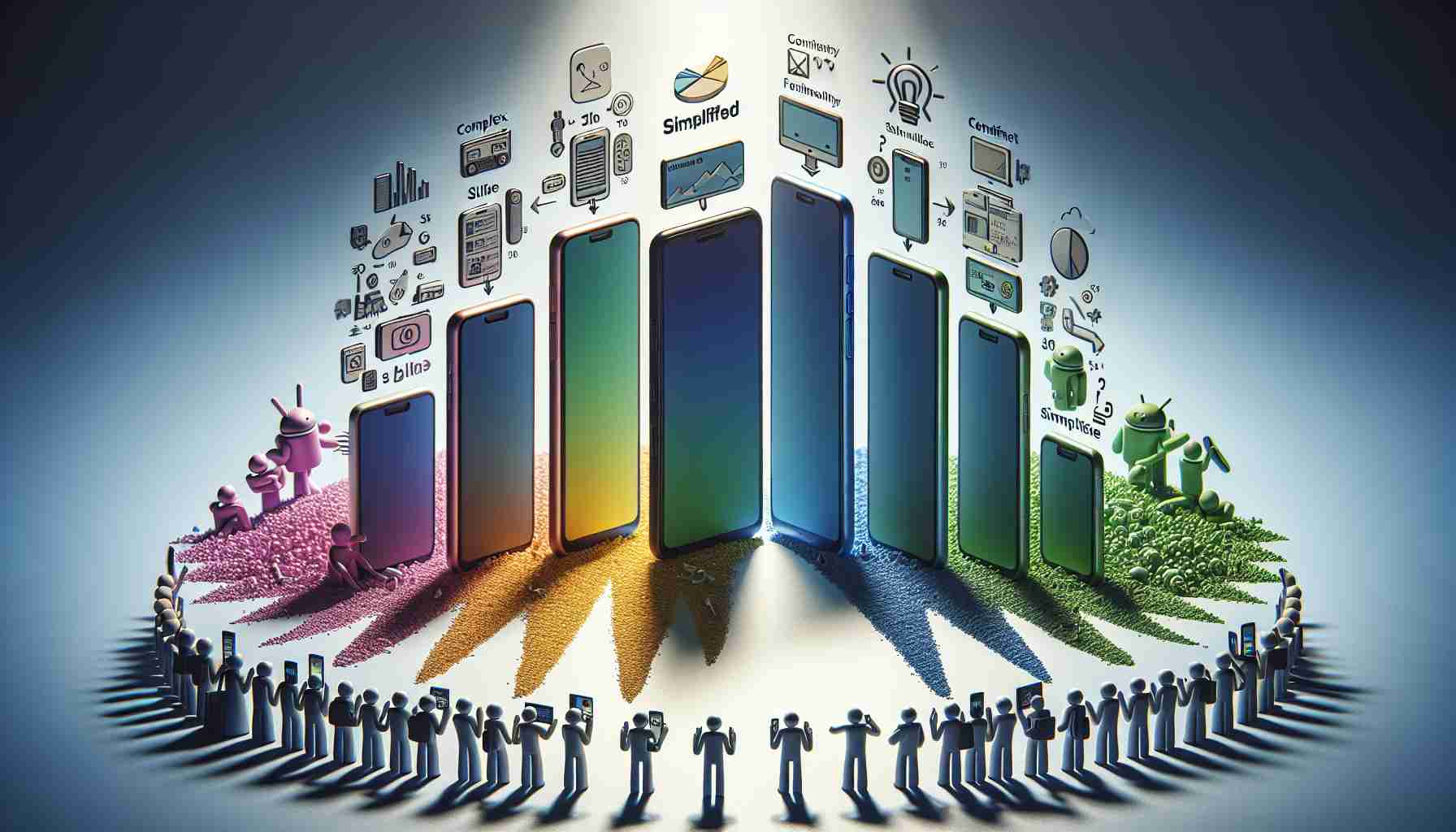Rediscovering the charm of simplicity, many users are waving goodbye to their smartphones in favor of the so-called ‘dumbphones’. This trend signals a growing desire for non-intrusive, healthier communication experiences, reminiscent of the late 1990s and early 2000s.
Dumbphones, characterized by their limited capabilities, primarily cater to basic communication needs such as making calls and sending text messages. In an age where technology races towards greater complexity, these devices stand out for their stark minimalism. If the dumbphone market were to burgeon, it might indeed inject a new ethos in our relationship with technology.
Sales are climbing for these nostalgia-inducing handsets, and they have even become a fashion statement, as seen by HMD Global’s partnership with Heineken creating the “Boring Phone.” Designed to only make calls and send texts, the phone’s simplicity is its selling point, prominently featured at Milan Design Week.
Understanding the ‘Dumbphone’
The term ‘dumbphone’ refers to mobile phones stripped of the bells and whistles of modern smartphones. Unlike their smart counterparts, which come laden with apps and internet connectivity, dumbphones lack access to time-sinking platforms like social media and email. These devices offer a way out of the pervasive, often overwhelming, landscape of digital multitasking, appealing to those who seek to embrace a more focused and digitally detached lifestyle.
The Cultural Renaissance of Dumbphones
A revolt against digital addiction is driving the dumbphone’s revival. Research, including studies from Harvard University, shows social media engagement triggering parts of the brain associated with substance dependence. Especially among youth, there is a burgeoning desire to cut down screen time and seek alternatives that curtail digital immersion.
Notably, an Ofcom study from the UK highlighted that approximately a quarter of children aged five to seven owned a smartphone, sparking mental health concerns and motivating a shift towards dumbphones as a protective measure.
Adults, too, are beginning to adopt these minimalist devices to reclaim the quality of their personal time. North America reports an uptick in dumbphone sales, indicating a wider embrace beyond younger demographics.
For those not ready to entirely forsake smartphones, hybrid solutions have surfaced. Products like Unpluq offer a compromise, wirelessly blocking apps such as social networks, melding connectivity with managed distraction.
Ultimately, the nostalgic allure of dumbphones plays no small role in their resurgence, evoking the simpler phones of yesteryear while offering a respite from the digital deluge of today.
Key Questions and Answers:
1. What is driving the popularity of dumbphones?
The popularity of dumbphones is being driven by a variety of factors, including digital detoxing, a desire to reduce screen time, concerns over mental health, and the appeal of simpler technology that focuses on essential communication features without multimedia distractions.
2. Are there demographic groups more inclined to use dumbphones?
Yes, both younger individuals seeking to escape the pressures of constant connectivity and adults looking to reclaim personal time or focus are inclined toward using dumbphones. Additionally, some parents consider these devices for younger children to limit their access to potentially harmful content and online interactions.
3. How do dumbphones fit into the current technology market?
Dumbphones represent a niche but growing segment of the technology market that caters to individuals who are either resistant to the complexity of modern smartphones or interested in the minimalist aspect as a lifestyle choice.
Advantages and Disadvantages:
Advantages:
– Reduced Distractions: Dumbphones prevent access to social media and other time-consuming apps, helping users to focus and be present.
– Longer Battery Life: Without power-intensive features like high-resolution screens and complex apps, dumbphones often have significantly longer battery life.
– Simplicity and Ease of Use: Dumbphones are simple to operate, offering straightforward interfaces that are easy for all users to understand.
– Lower Costs: Dumbphones are typically more affordable upfront and incur lower service fees since data plans are not necessary.
Disadvantages:
– Limited Functions: The simplicity of dumbphones also means a lack of functionality beyond calls and texts, which can be limiting for some users.
– Inaccessibility to Services: Many services require internet connectivity, which dumbphones don’t provide, hindering access to online resources, navigation, and communication tools.
– Perceived as Outdated: Dumbphones can be seen as a step backward technologically, and there may be a social stigma or perception of being out of touch.
Key Challenges and Controversies:
– Balancing the demand for basic phones with the need for safety features like GPS and emergency services available through smartphones.
– Ensuring sustainability in production, as a shift in the market could lead to increased landfill waste if not managed properly.
– Addressing the digital divide, as some people may choose dumbphones out of necessity rather than preference due to economic factors.
Additional Information and Links:
For further reading on digital detox and smartphone alternatives, you can visit Digital Detox or Light Phone, which offers a simplified phone designed to encourage less time spent on the device. Additionally, the potential impact on mental health can be explored at World Health Organization (WHO), which has resources and research on the effects of digital technology on well-being.
